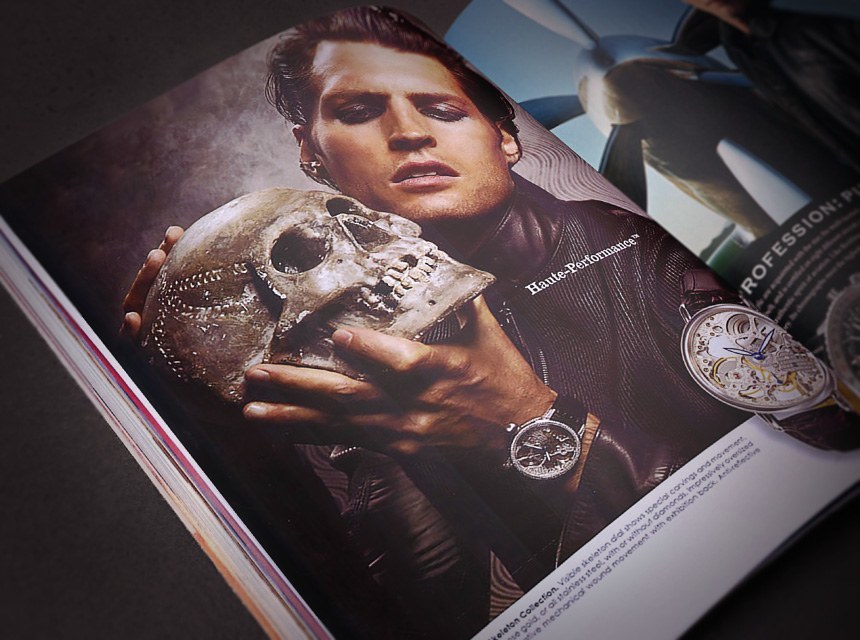
It is a hot late-Summer day in the Lower East Side of people-busy Manhattan, and strolling down the street, I notice the side of a brick building painted with a 12-foot tall advertisement for a luxury watch company. It would actually be easy to miss noticing it above the corner market below, situated at the ground floor of the aging residential structure, and the ad – like so many of its kin – simply has the name of a brand and the picture of a watch, with an arguably tantalizing, yet ambiguous, slogan.
Around the planet, in Hong Kong, watch ads litter the streets, buses, and billboards. It is difficult to travel more than a few steps in any commercial area and remove yourself from a line-of-sight view with a poster or sign marketing a watch maker – often with a regional or international celebrity wearing the product. In a dark, dirty, and ill-smelling alley behind the main thoroughfare, the walls are lined with evenly spaced posters for some of the world’s top luxury watch makers.

Somewhere between New York and China, a couple sits in the lobby of a five star hotel until their room that was supposed to be available hours earlier is ready. In front of them on a table is a series of artfully fanned out “lifestyle magazines,” each populated with at least 10 ads for watches, most of which feature a brand name floating around a gloriously photographed and meticulously edited timepiece image, with little to no supporting text. These magazines exist exclusively to find their way into places where people, who are suspected to have large disposable incomes, wait.
Dozens of times each year, large and small watch companies sponsor popular people and widely-attended events (or so they believe), in the hopes of reaching the eyes and hearts of fans and followers. The accumulation of these marketing efforts, and others like them, probably add up into the billions of dollars each year.
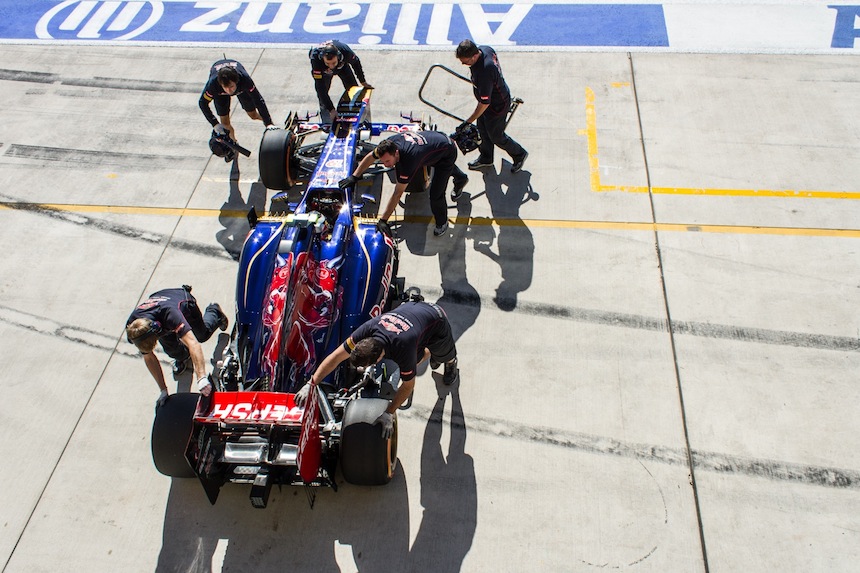
Formula 1 is a popular global event and hence countless watch brands have participated in it. Our James Stacey earlier this year discussed the topic in: “Why Sponsor A Formula 1 Team?” article here
Some watch companies spend as much as 60% of their revenue on marketing. Most all of them dedicate significant portions of their income to marketing efforts designed to make people aware of their products and to help position their brand as an equal, or as more excellent than their competitors. Market statistics (at least in the United States and Asia) indicate a very strong correlation between the amount of ad dollars spent in a region and high-end watch brand’s success in that region. Taken together, the resulting message is that watch brands both understand marketing is important, and strive heavily to fund it.
But is watch marketing – specifically, that area of marketing related to the more expensive high-end brands – working? Sure, some of it works wonderfully, but the real question is whether or not the industry as a whole is using the most efficient and effective tactics available in order to assist consumers to both discover, and help select the watches they want to learn about and eventually purchase?
The purpose of this article is to ask questions about an industry I work within, and to illustrate various experiences, quotes, and discussions that I’ve observed or participated in over the last several years. As an outsider coming into the watch industry around 2007, I immediately noticed some odd things, compared to other industries. Eventually, I began to better understand many of the peculiarities about the watch and luxury industry, but I’ve never been able to shake that feeling of “it could be done a lot better.”
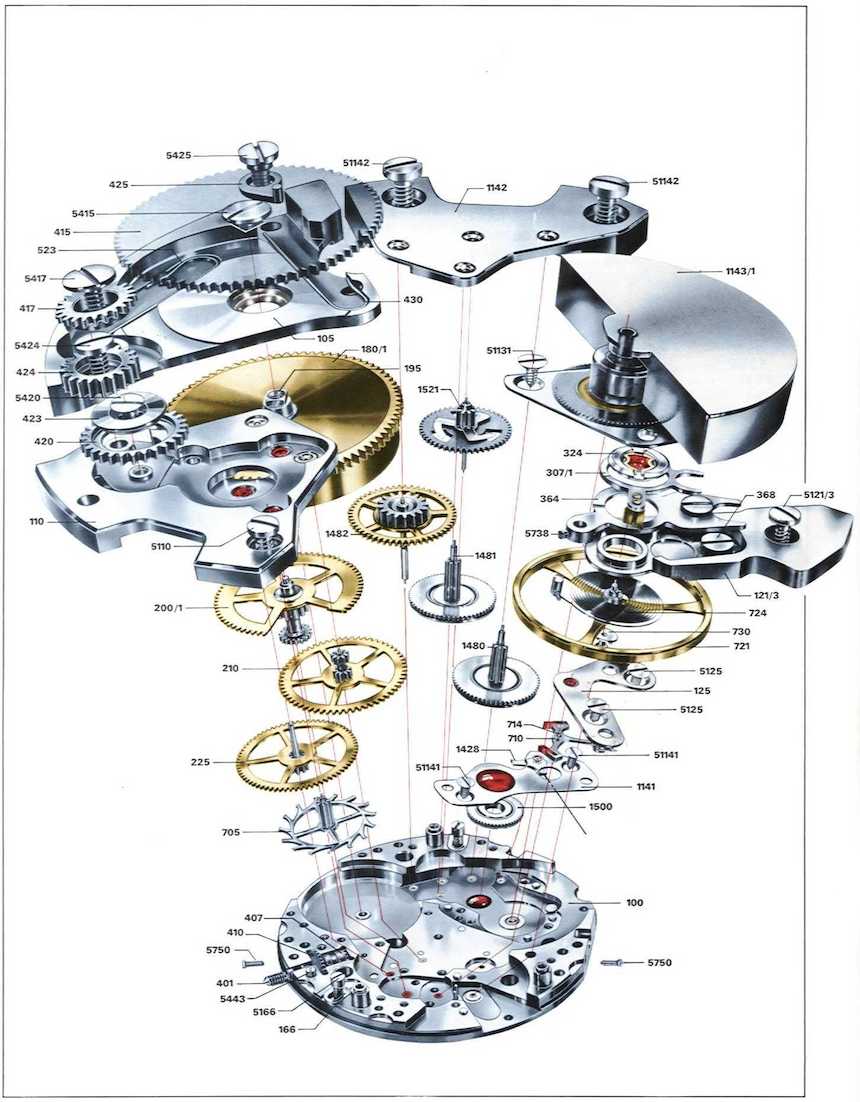
Luxury watches are often highly complicated items – it is this high level of complexity and refinement that is difficult to be transmitted through short, impulsive messages
Outside of when people or companies ask for my advice or consultation, I’ve stopped offering specific feedback to watch brands on their marketing practices. That is because I have inadvertently insulted many people who were working in that area for a lot longer than myself, and because I came across as cocky or that I knew more than other people. Such complications no doubt get in the way of anyone’s idealism, but it has also given me an opportunity to step back and observe the marketing efforts of the watch industry in a more detached, mature, and open-minded manner, without feeling it necessary to always comment. On that note, I’ll proceed with certain questions and observations about the effects of current watch industry marketing that I’ve noticed come up over the years.
There is an important challenge in regard to marketing watches that most (at least many) other advertised products do not have. Watches – unlike, say, beer – do not automatically have a demanding consumer base. People generally want beer, and while demand fluctuates, beer companies don’t really need to tell consumers “here is why you want to drink beer.” Instead, beer companies have the difficult goal of telling people “why you should drink our beer.” With watches, the challenge is great. Not only do watch companies have to tell people why they should buy a particular watch, but also why they should buy a watch at all.
Jean-Claude Biver, the former CEO and now Chairman of Hublot, famously quipped that no one needs a wrist watch. He was referring to the fact that the antecedent reason for owning a timepiece no longer exists. People no longer strictly require a watch to know the time, and in most instances, someone’s timepiece isn’t even the most accurate means of telling the time on their person – even if it is the most convenient. This might sound obvious, but just a generation or two ago, owning a wrist watch was as crucial as having a toothbrush and shoes.
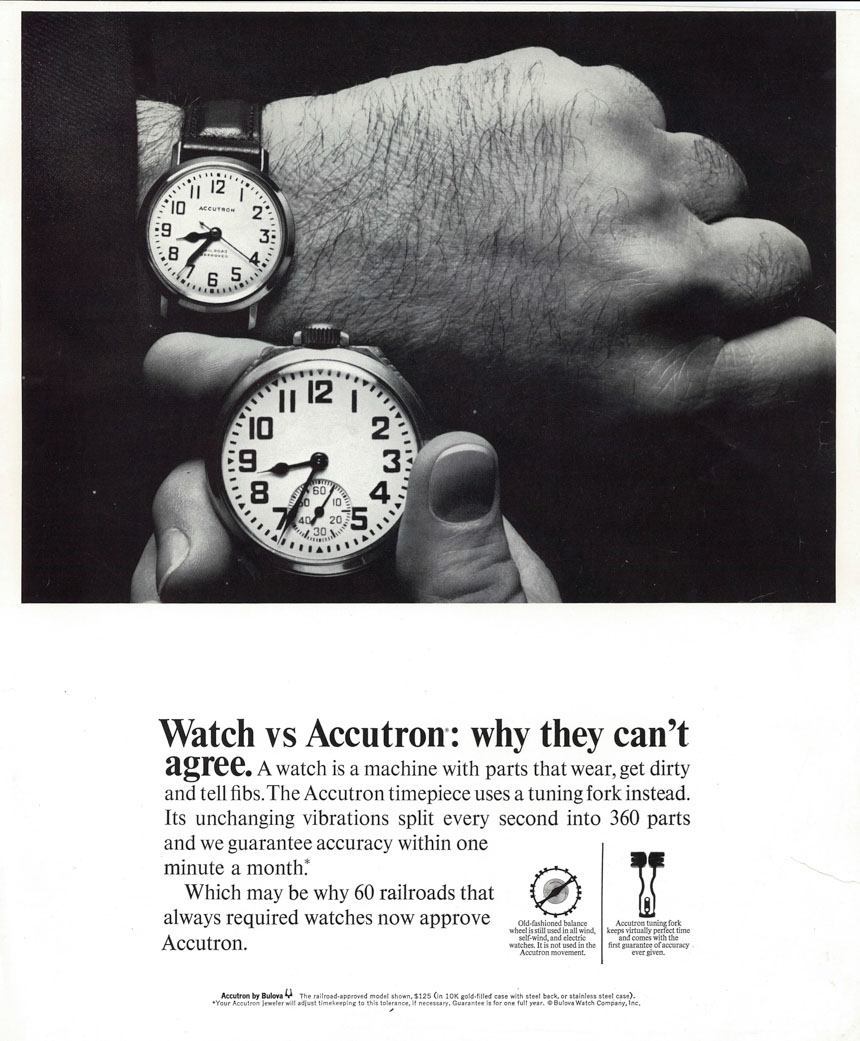
An ad from a time when watches were indeed indispensable. Watch vs Accutron: Advertisement For Railroad Approved Accutron Timepieces, Noted For Their Superior Accuracy
Facing the dilemma of potential obsolescence, first in the face of inexpensive equivalent competition (quartz watches) in the 1980s, mechanical watch companies decided to go “high-end.” In the late 90s and early 2000s, high-end watch companies faced yet another foe: the ubiquity of the mobile phone (which indicates the time). This prompted them to go even higher-end. Pretty much, the only way to compete in a market of effective cheap stuff is to distinguish your product as being classier, better made, more exclusive, and “the type of thing rich and famous people with good taste own.” These aren’t bad tactics, in theory, but actually achieving it is complicated and less than straight-forward.
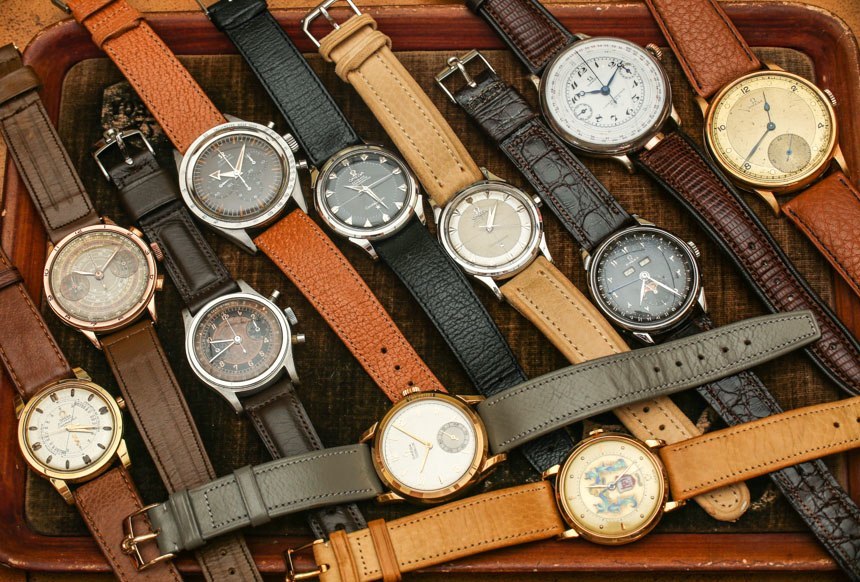
In the face of marketing complexity, the watch industry has a secret weapon. One of the biggest assets of the watch industry is the existence of serious watch collectors. Few industries have such a developed, well-funded, outspoken, and sophisticated base of consumers who are passionate about their products. Watch collectors are an extremely valuable asset, not only because they represent people who do not need to be convinced to buy watches, but because they are able to offer meaningful feedback that can help brands monitor their own marketing initiatives, product development, and outward-facing personalities. Watch collectors may be anything from finicky to verbose, but they are a group that any watch brand can rely on to be knowledgeable and responsive – as well as likely buyers.
One of the problems I see in contemporary watch marketing is that watch companies often tend to ignore watch collectors when they are developing new marketing campaigns. Of course, that isn’t a universal truth, but too often collectors are put in a position where they view a message by a brand they are emotionally connected to, which clearly doesn’t speak to them. Watch brands do engage regularly with their top collectors in a very meaningful manner, but it isn’t enough to keep most companies alive. While watch companies no doubt need the revenue stream of a wider audience than highly niche-educated collectors, they might be wise to consider those collectors akin to shareholders when making decisions that affect the image of a brand.
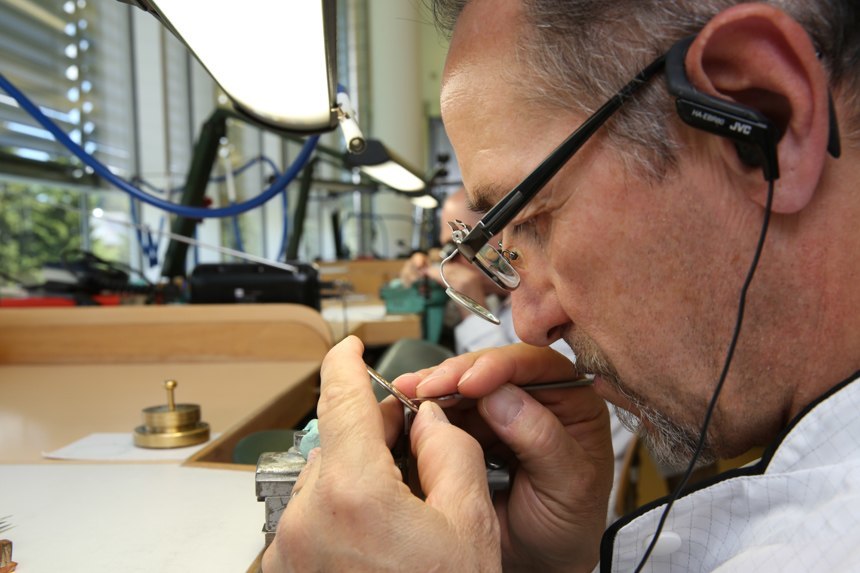
The CEO of Audemars Piguet, Mr. Francois Bennahmias, recently exclaimed to me that, in his opinion, the most powerful tool any serious watch brand has was the “manufacture visit.” I’ve been on many of these factory tours to Switzerland and can attest to the fact that they are extremely powerful ways of having someone connect with the brand. Not only does someone get to experience the location and methods behind how a watch is made, but they also get to experience the people and culture, as well as often the history, behind how a brand’s watch are made. The trick, of course, is in being able to communicate the key elements of such a personal visit with the public at large.
If taken literally, the advice from Mr. Bennahmias would be that watch brands should take careful note of all those little stories, details, and qualities which help people emotionally connect to their products and brands, and then cleverly dispense them via a series of marketing campaigns designed to create a close relationship with a customer. This rarely happens. What does end up happening is sort of ultra-consolidation, where all the allure of a company, its products, and history are distilled into a few simple messages or images. They frequently fail to properly communicate with people who are eager to understand a brand and develop a relationship with them.
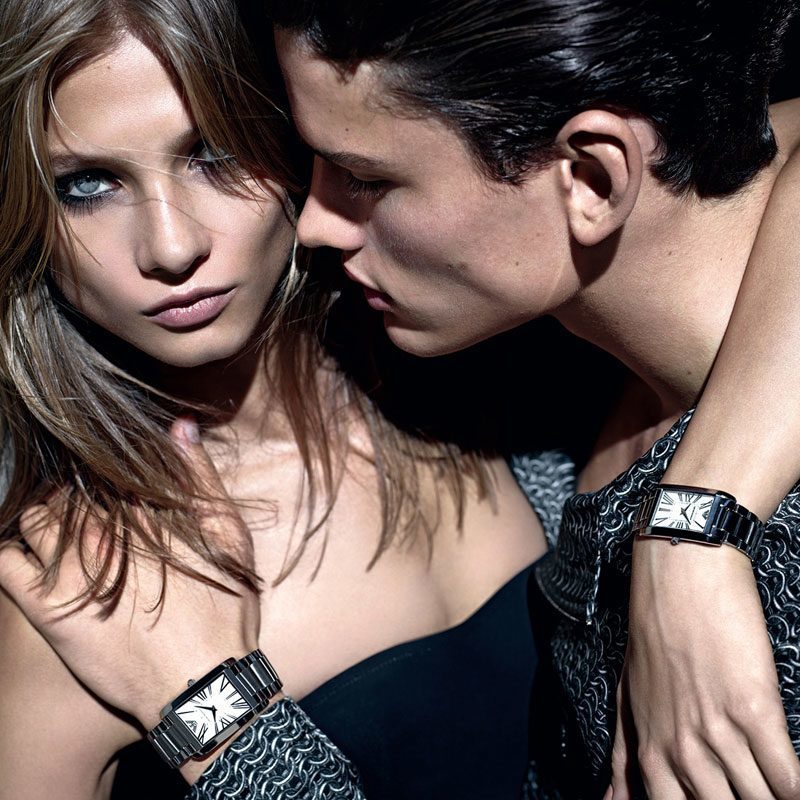
A rather generic looking fashion-watch advertisement – the same “message” and layout is often translated into luxury watch ads
Modern luxury watch brands, in a large way, are influenced by the luxury fashion industry. What has been communicated to me is that the watch companies, in an attempt to become more “luxury” on a mainstream basis, have turned to lessons from companies selling expensive clothing, jewelry, and other accessories. These non-mechanical items have focused on visual imagery, style, and lifestyle as a means of positioning their brands and products. The question is whether or not watches are more like clothing, or perhaps something else, better suited to a mechanical device that in part is being sold on a degree of lasting value.
Clothing, whether it is luxury or not, is inherently ephemeral in the majority of its marketing practices. Fashion is about styles, trends, and what is popular for a limited period of time, until something new comes [next season]. I suppose you could apply this to watches, but I’ve never heard of any watch consumer who accepts the idea that their luxury watch should be something that is meant to be worn for a single season only. Granted, watch companies would love the idea if people purchased several new watches per year to go with the latest fashion trends, but such a desire would not comport with the demographic of most high-end watch buyers that tend to be men (who, while perhaps highly fashionable, tend to be more consistent in their style over time).
While watch brands may have “fashion on their minds” when contemplating marketing decisions, they also like to preach the value of heritage and timelessness. These qualities, in many instances, are mutually exclusive from the idea that something is meant to be worn on a temporary basis only. Luxury watches also differ from fashion because different mentalities are at work when appreciating the desirability of the items. The guy who is interested in watch movements and car engines, isn’t likely to be the same demographic that watches runway shows and is interested in the style section of the newspaper or websites.
What clothing and watches do have in common is that they both have a massive communicative element to them. Watches and clothing are primary ways people send signals about their taste, social and economic status, as well as their lifestyles. Fashion, unlike a timepiece, is nevertheless necessary in the majority of social instances. Watches are optional luxuries, while clothing is something that people are going to wear either way.
That goes back to the previous argument about demand creation versus demand satisfaction. The fashion world is mostly in the business of demand satisfaction, while the watch industry, like that of other “connoisseur” pursuits, must strive to create demand, and only then seek to satisfy it. It is a very important distinction, and one that, in my opinion, the watch industry needs to focus on a lot more. While in certain cultures, watch demand is much higher than others (say, in parts of Asia), it is a wise decision for watch brands to focus on three very important message types in their marketing activities. The messages are: 1) why people should want a high-end watch, 2) why people should want something from your brand, and 3) what are the various elements of appeal in your individual product lines. Ideally, these messages are spread out over time and communicated separately, in order to make the biggest impact.
It isn’t news to most major watch brands that the traditional display advertising tactics they have used to market their watches aren’t as highly effective as they would like. One of the major reasons behind that is how marketing campaigns are produced in addition to the existence of “new media.” Some message campaigns are designed in-house, while others are the product of relationships with outside marketing and creative agencies – who, understandably, aren’t as knowledgeable about brands as the brands themselves. Timepieces are incredibly difficult to fully appreciate, and mastery can take many years.

Online advertising is complicated for most types of companies, which means the typically slow-to-adopt-novel-concepts Swiss watch industry is at an even greater disadvantage when it comes to the newest area of marketing for the luxury watch industry. Online advertising success requires a range of elements in place such as having a conversion goal (basically a planned path consumers will take from initially seeing an advertisement to eventual purchase), as well as having sheer mastery over the message an advertiser wishes to make. Arguably, most watch brands of high esteem have neither of these elements in place.
A tactic employed by some watch companies wishing to sidestep their own shortcomings (that they are most always cognizant of) is to simply work with voices they feel understand internet media better than them. This includes hiring some members of the online watch media as well those who they feel are proficient in the area of social media to discuss their brand or products in a sponsored fashion (whether it is explicitly stated or not). This tactic is becoming more popular in other industries as well, but experts frequently advise against it. While it can yield short-term gain, the long-term outlook is less rosy. In addition to brands leaving their reputation and image in the hands of other people, the larger danger is in the consumer response.
Consumer trust is a huge issue in high-end watches. Trust and integrity are two of the most important qualities consumers look for in the watch brands that they wish to invest their own money in. Consumer awareness of a brand paying a member of the media to communicate or feature their products can highly degrade consumer trust. This is a larger issue, but the bottom line is that brands should focus on authentic relationship building and more transparent business relationships with media in order to preserve the incredibly valuable commodity that is consumer trust.

